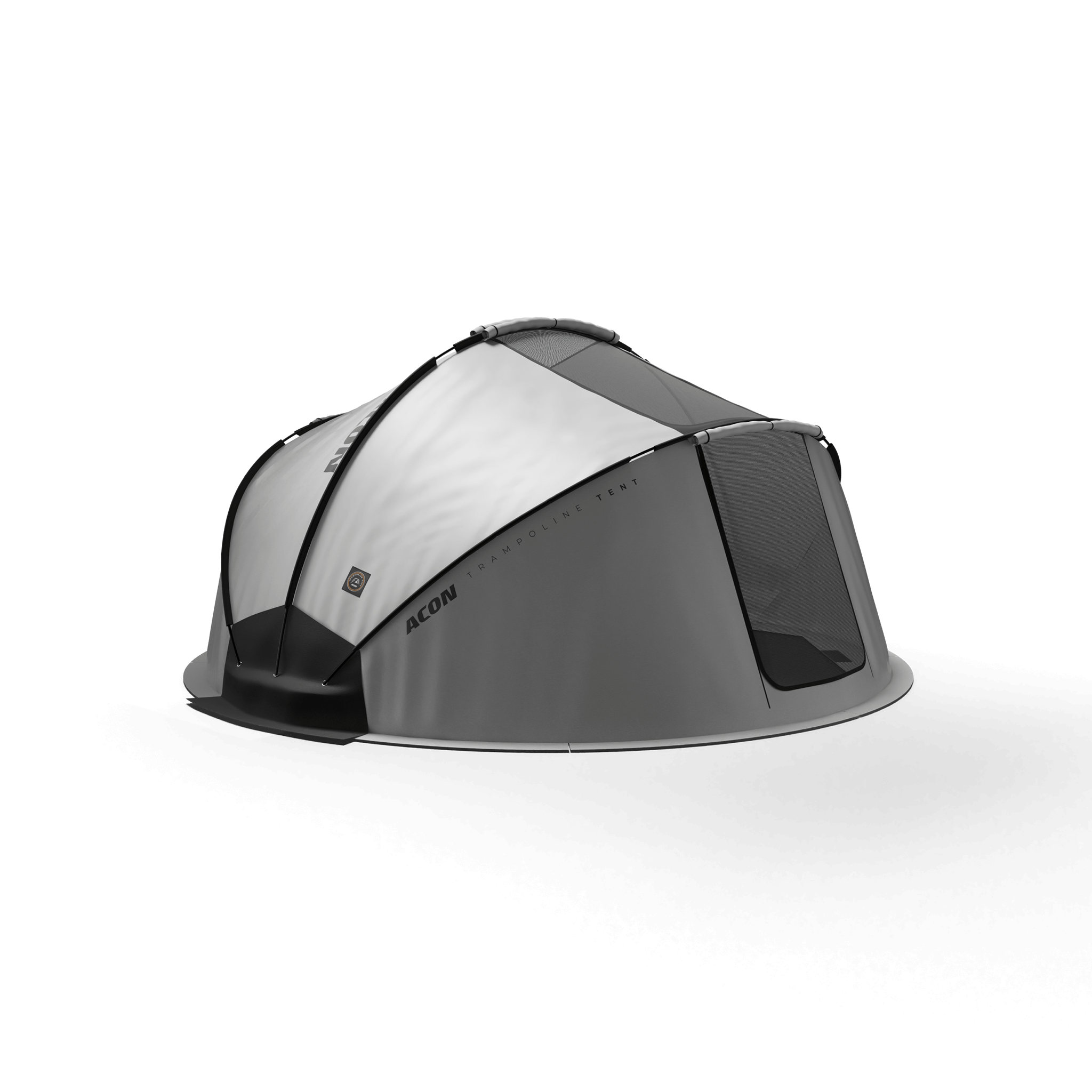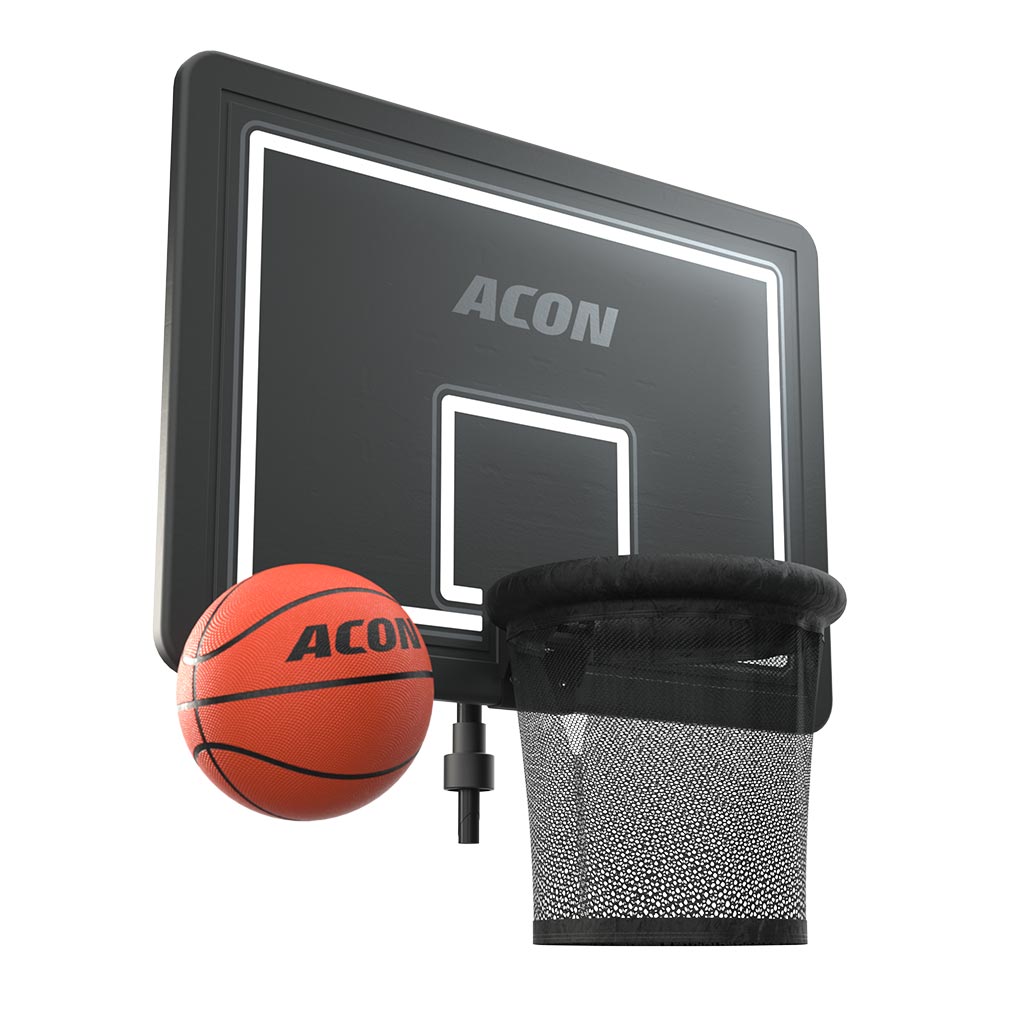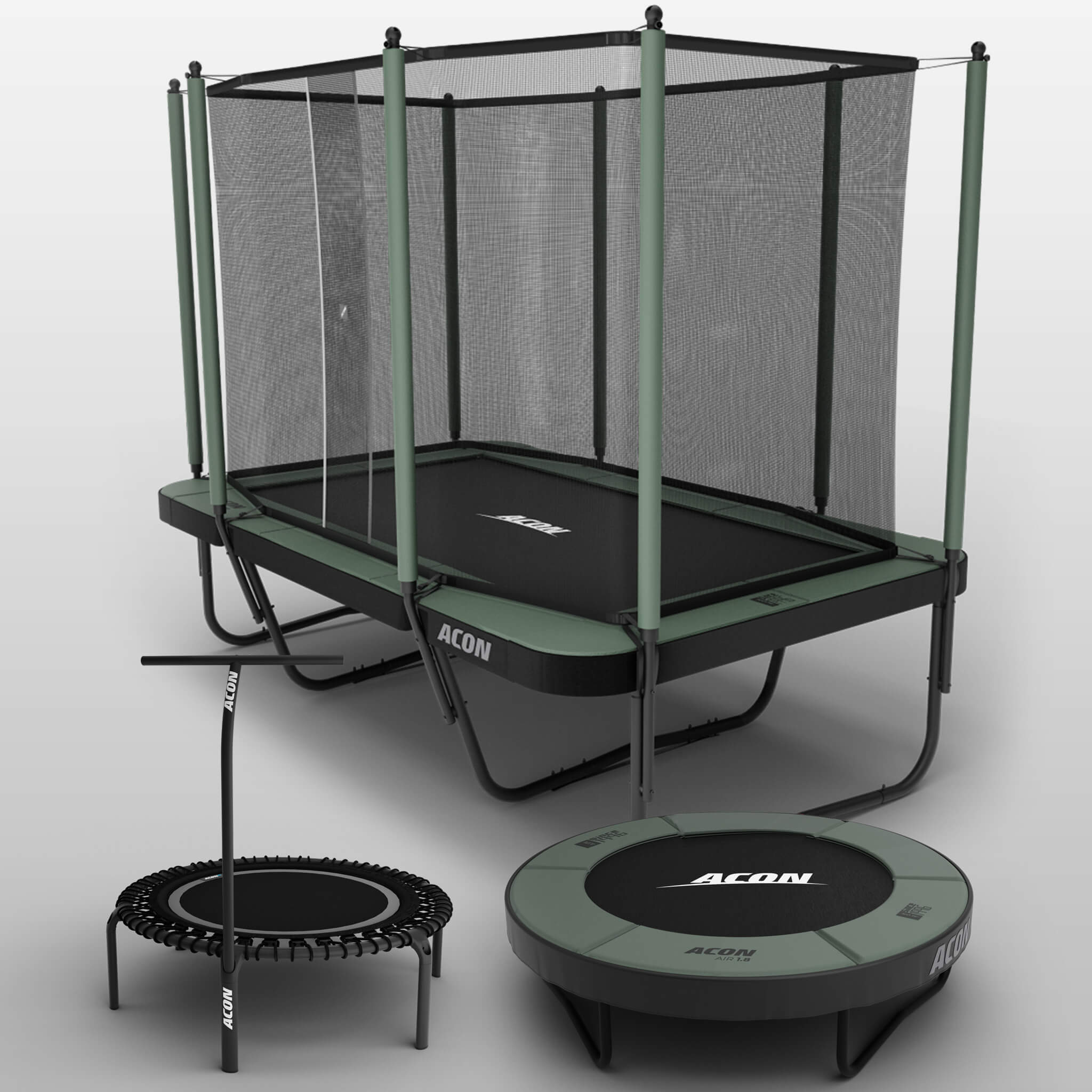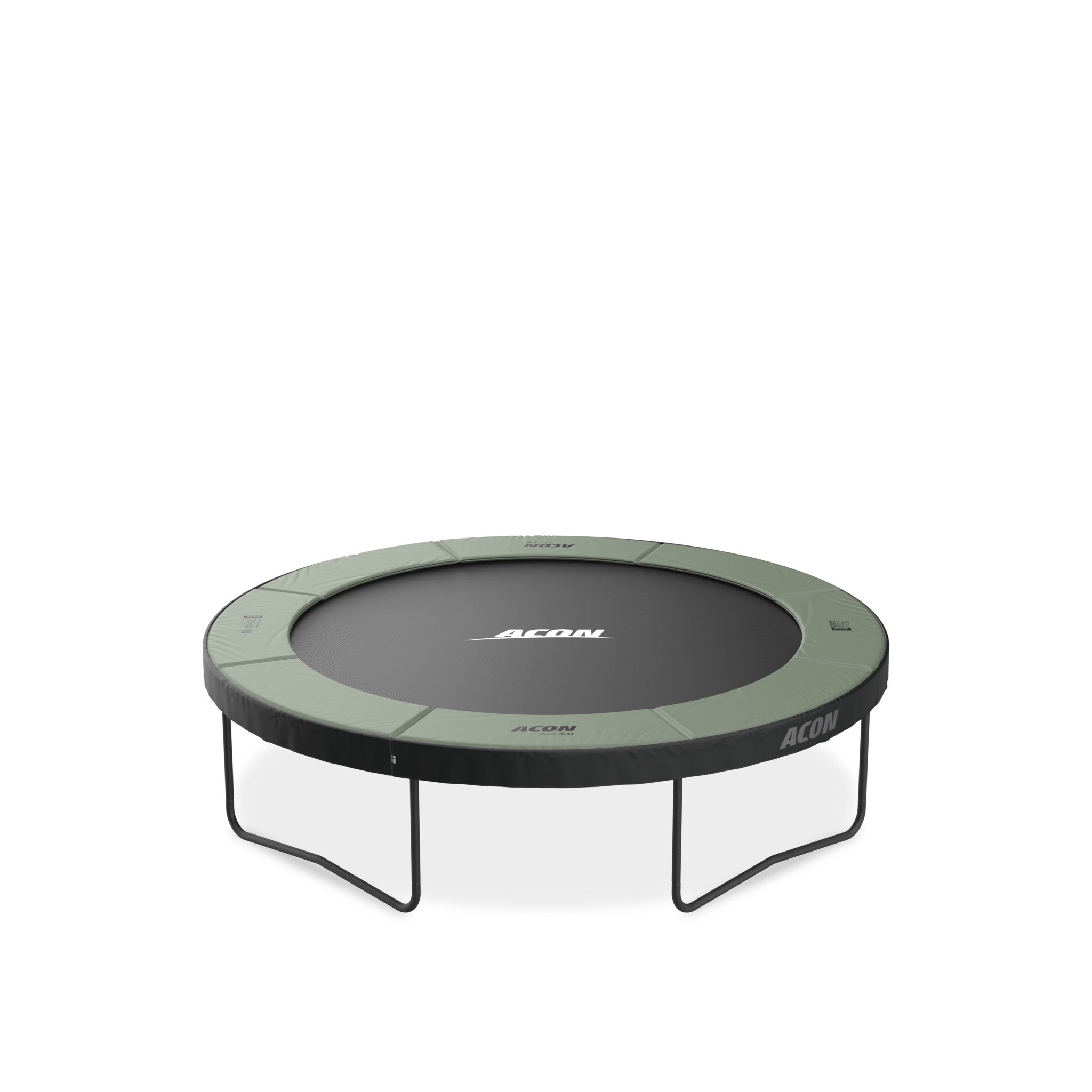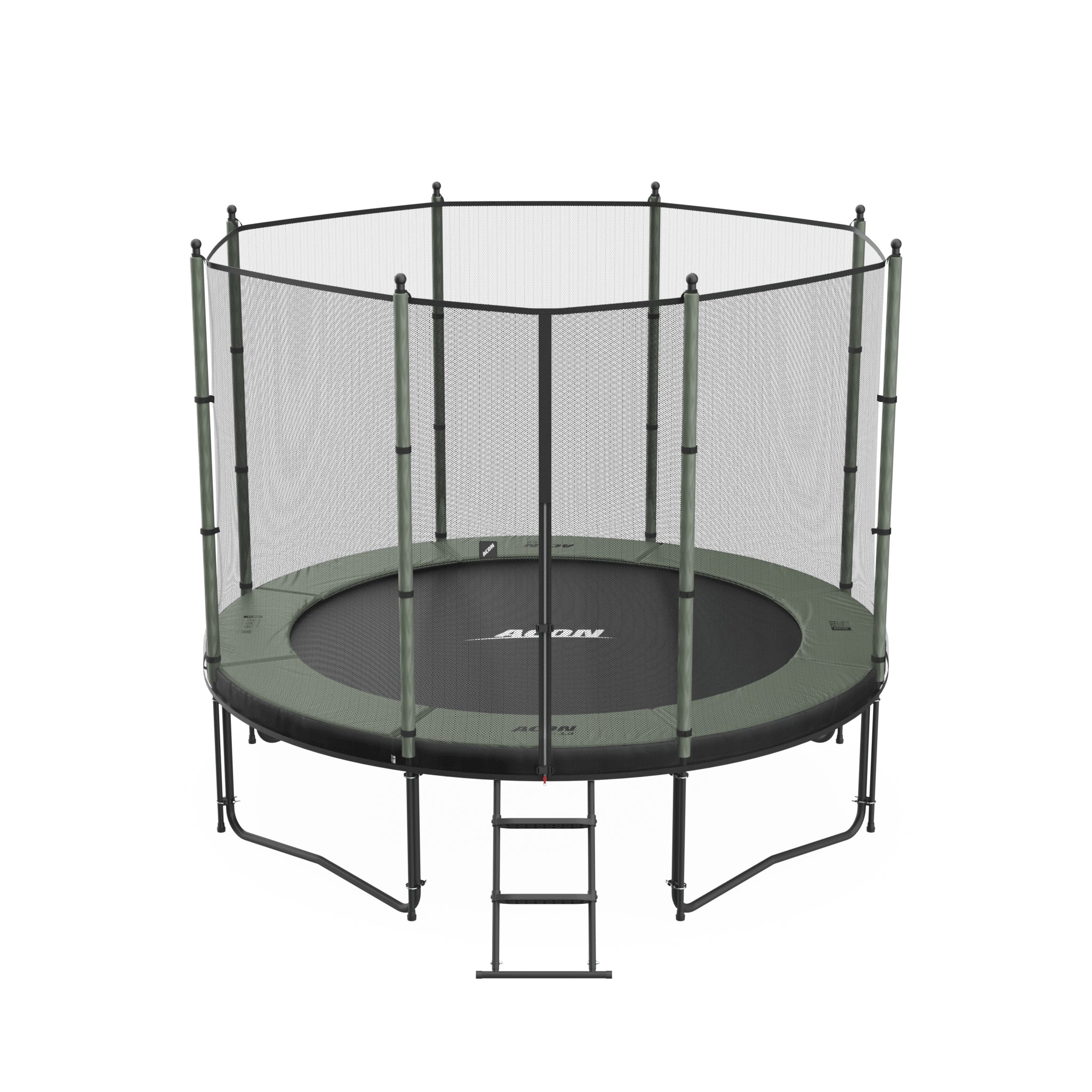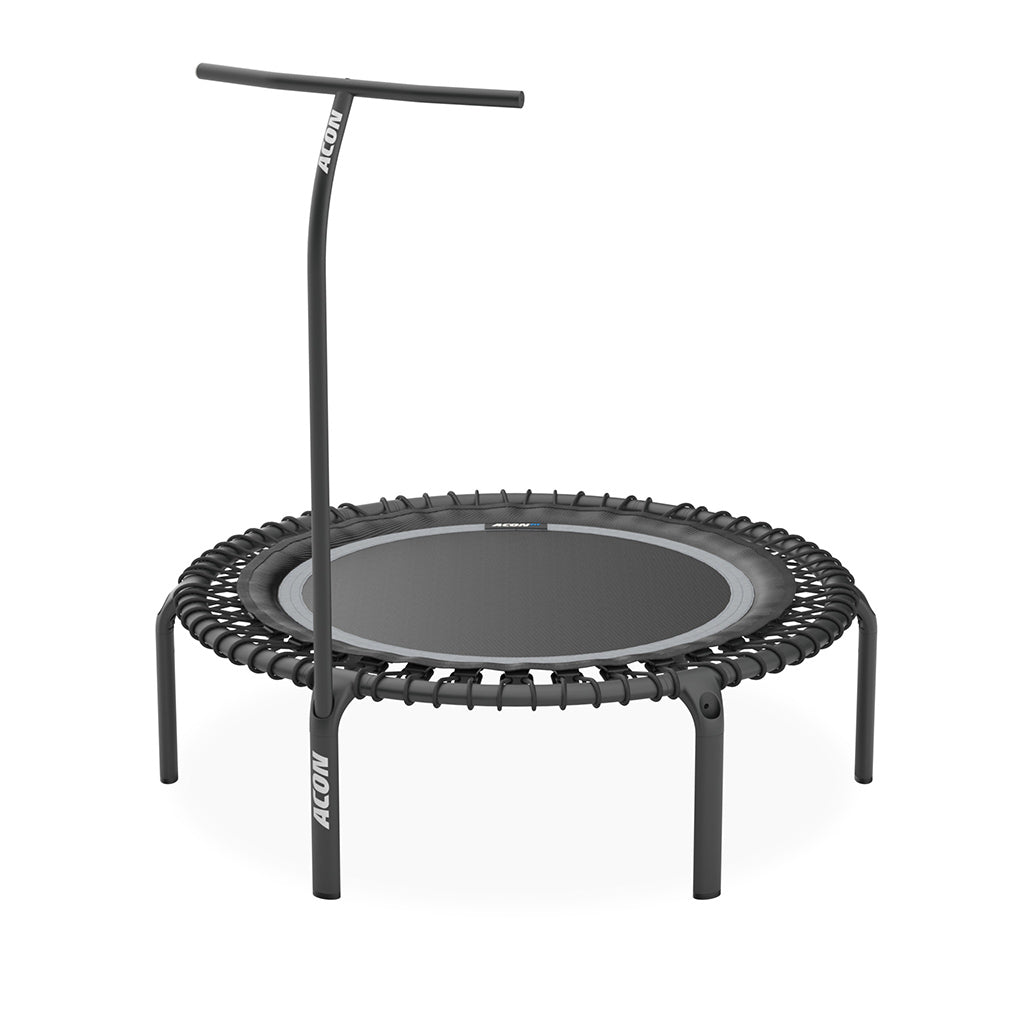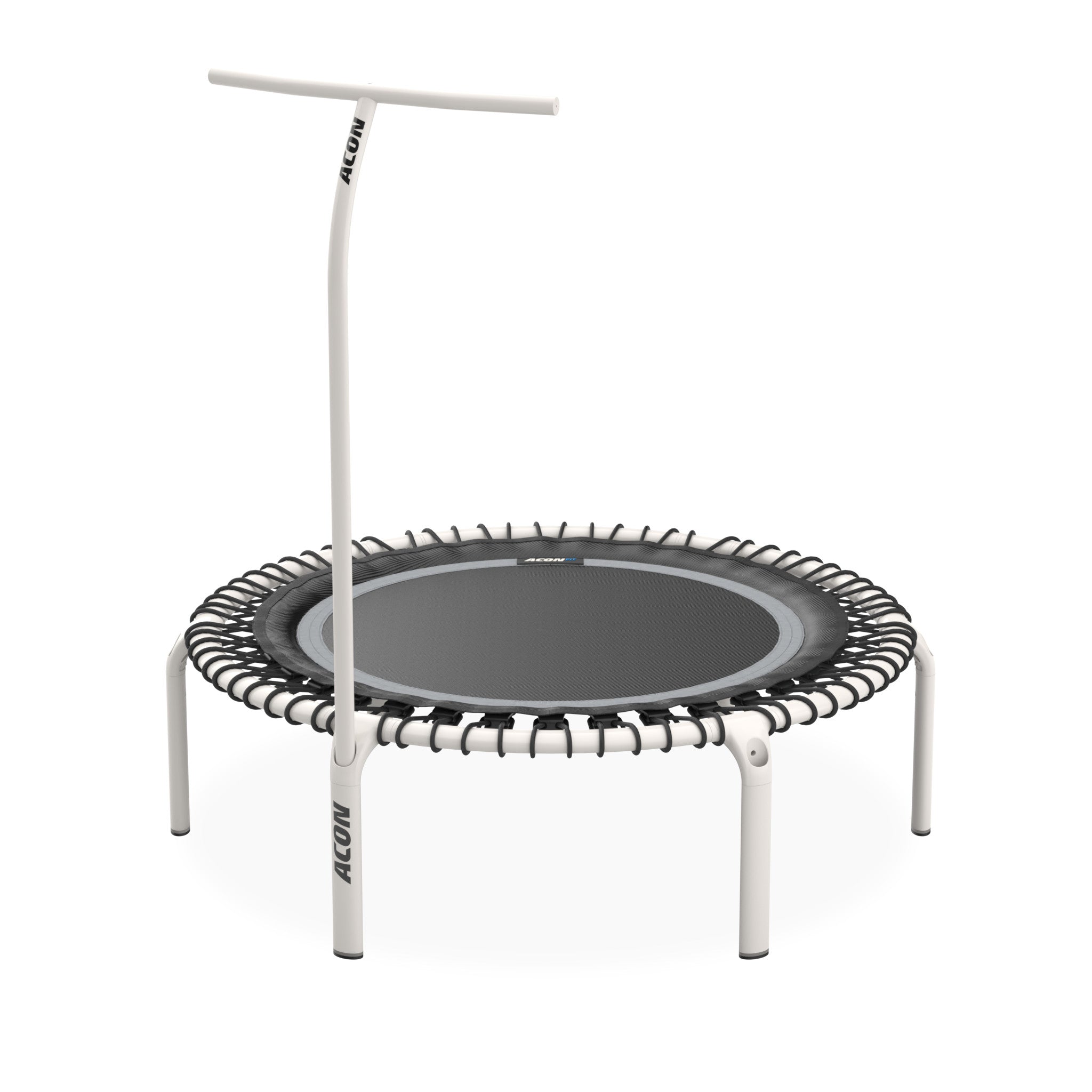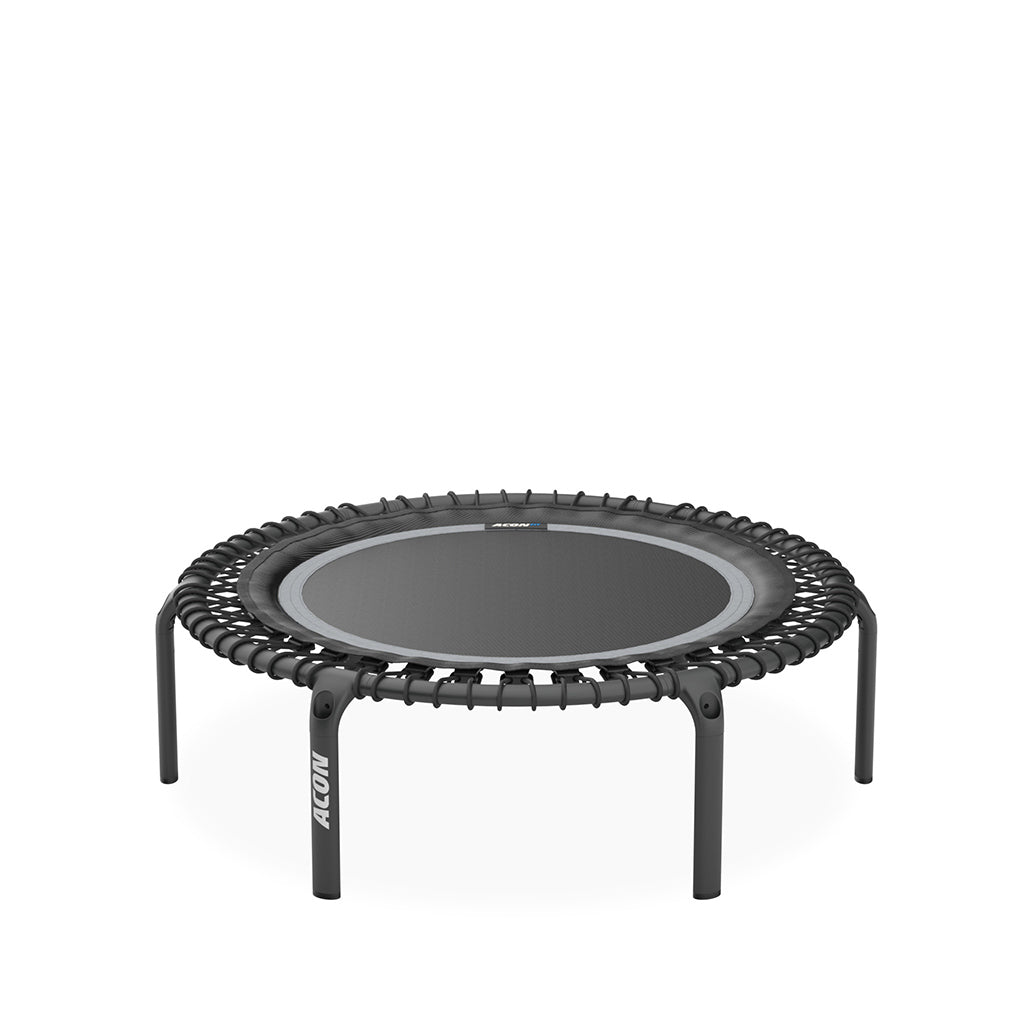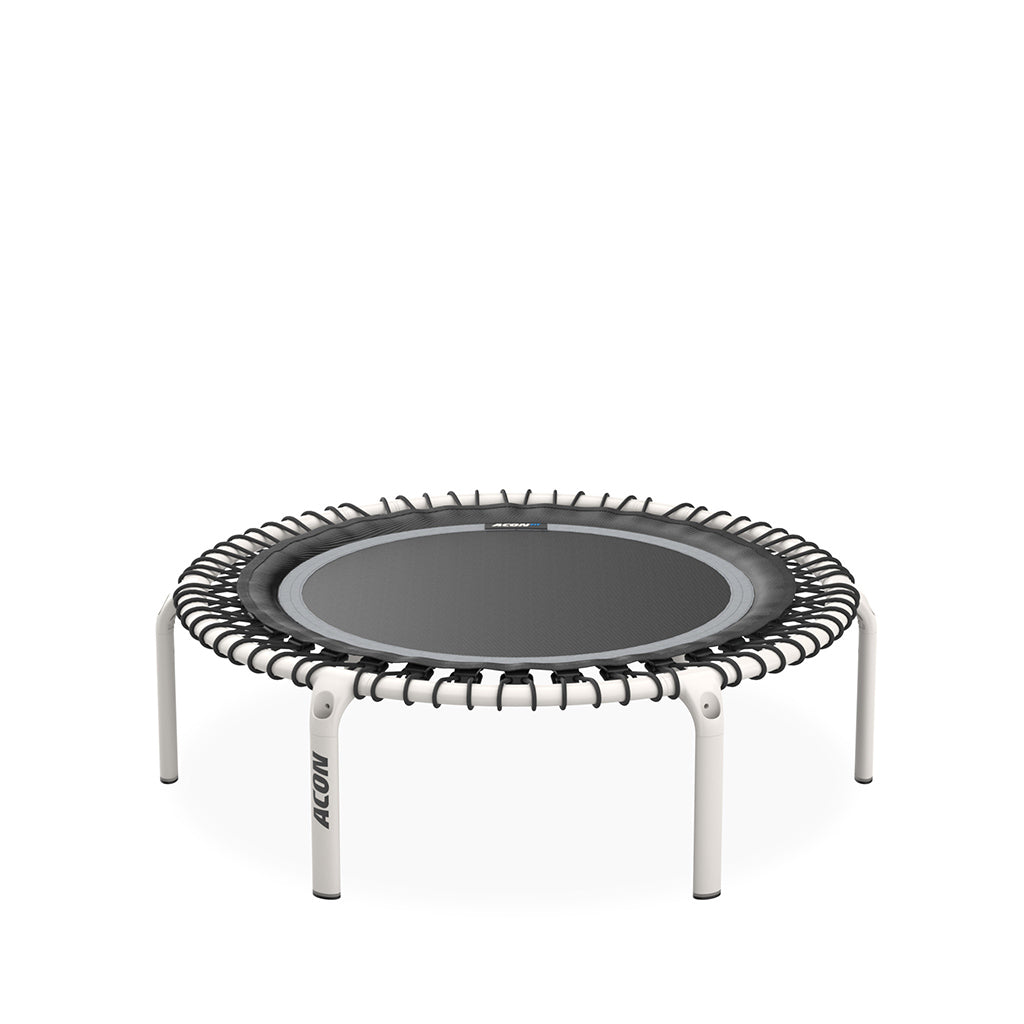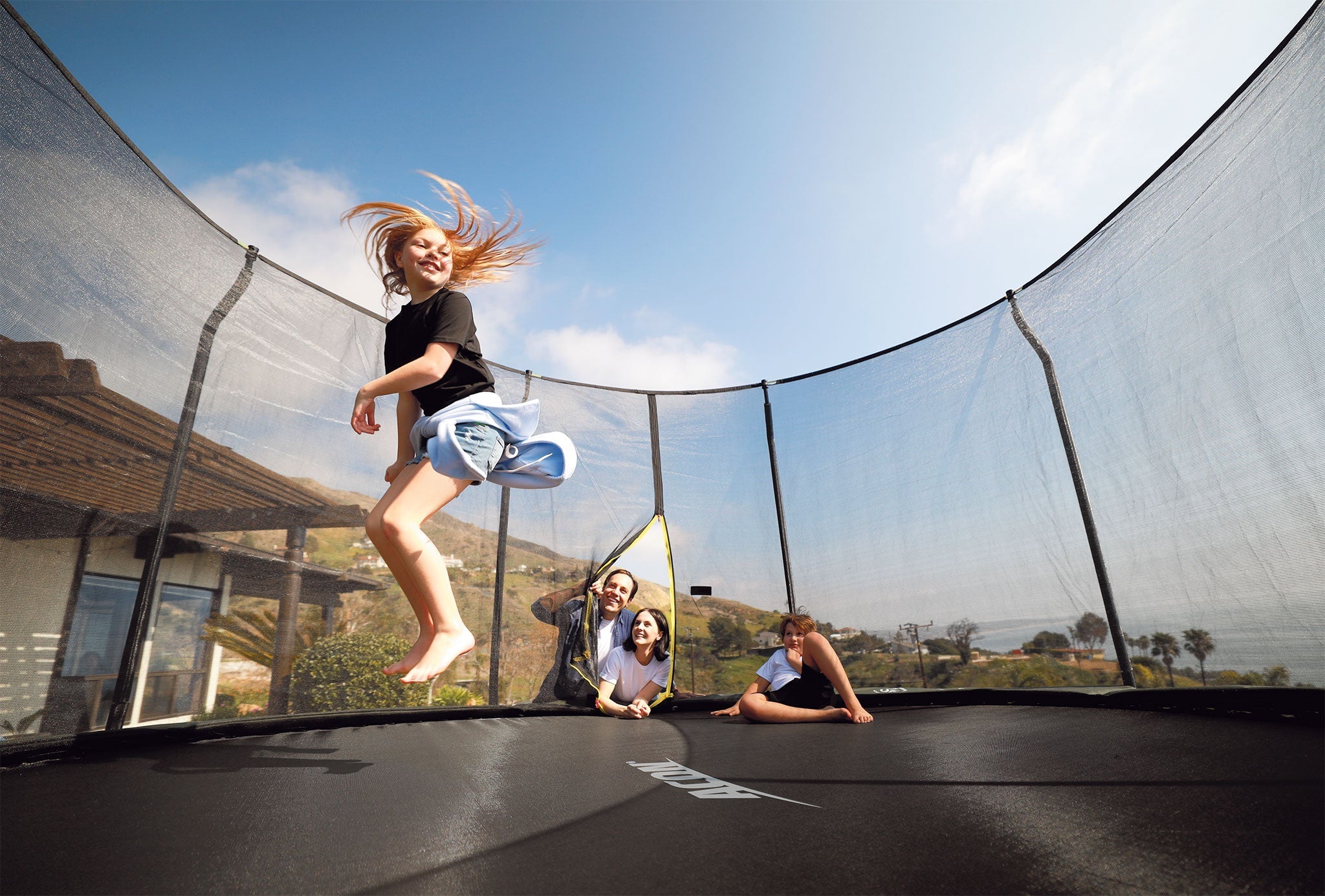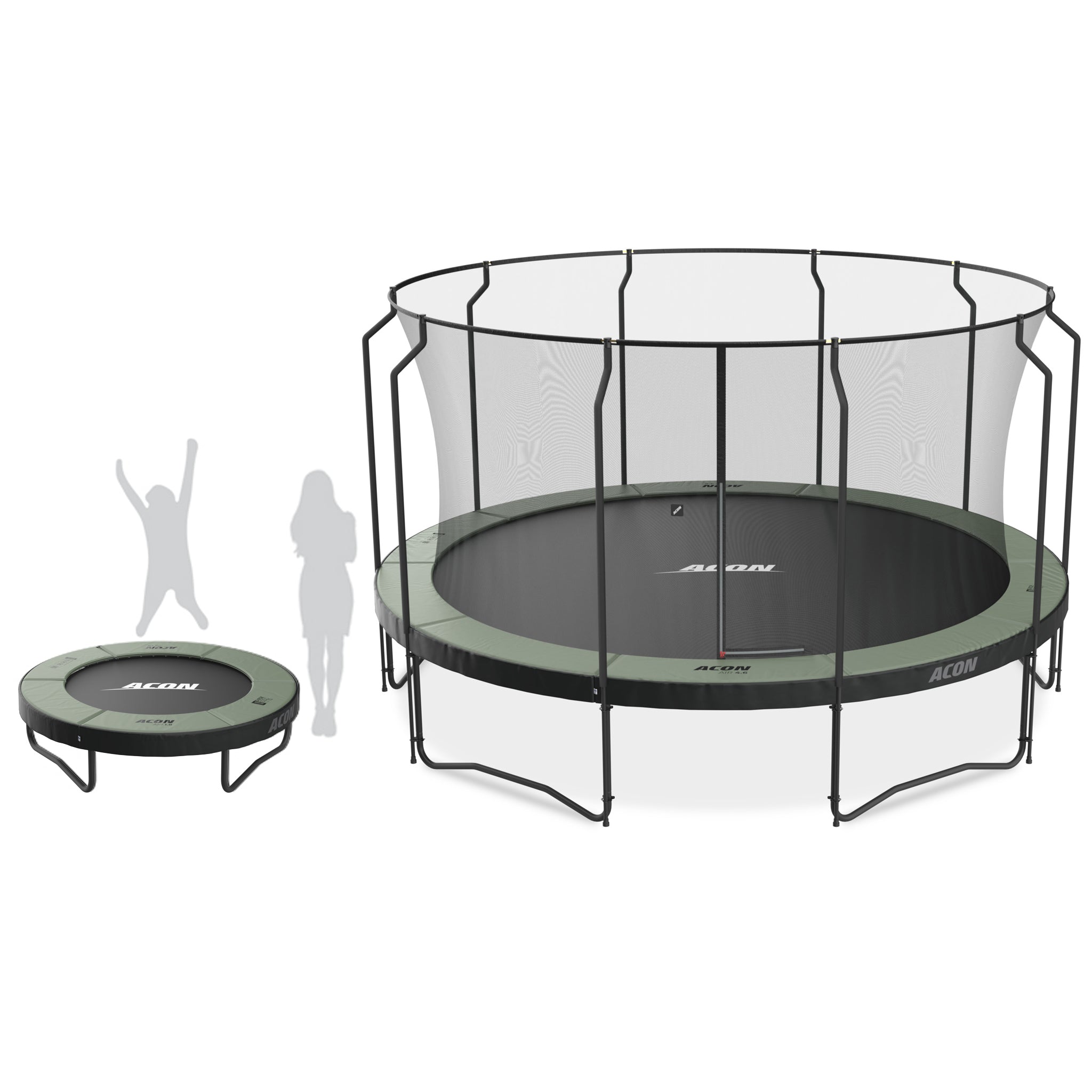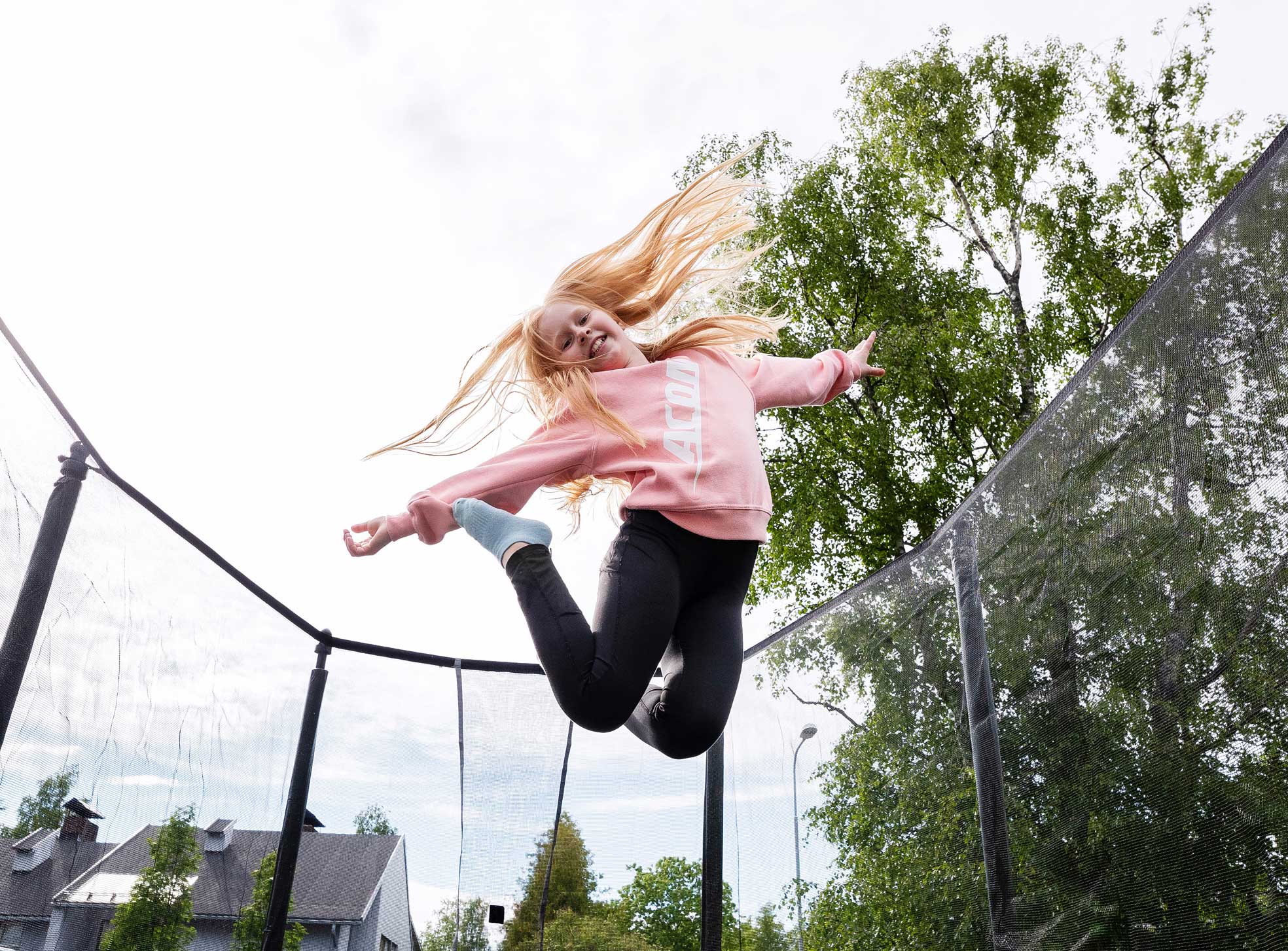Distributacon Inc.
1250 Wayzata Blvd E Unit 1127,
Wayzata, MN 55391, USA
To help you choose the right product for you, we’re going to differentiate between trampolines, rebounders and minis: by examining some of the misconceptions, advantages and drawbacks of each, so you can decide the product best suited to your home fun, fitness or workout needs.
By presenting a comprehensive comparison of trampolines, rebounders and minis we help you to solve the dilemma of which one is right for you! Let’s dive in and take a look at the options.
In this article, we explain:
- What is a trampoline?
- Types of Trampolines
- What is a Mini Trampoline?
- Types of Mini Trampolines
- What is a Rebounder?
- Types of Rebounders
- Common Misconceptions Trampoline vs. Rebounder vs Mini
- Pros and Cons of Each Trampoline Type
- Table of Main Differences of Each Trampoline Type
- Which Type of Trampoline is the best for me?
- Frequently Asked Questions
What is a Trampoline?
A trampoline, at its most basic, is a piece of equipment that you jump on as a springboard. It consists of a large, strong piece of fabric, that is the trampoline mat, that’s stretched over an elevated metal or steel frame, as well as the springs. The springs together with the mat and frame then create the bounce. If you’re thinking about getting one for your home, you can try our trampoline quiz to see which type suits you best.
Bouncing on a trampoline is done both as a recreational, leisure activity and competitively. Trampolines can be used by both kids and adults as a fun, high-energy activity and exercise, and are also used by professional and amateur gymnasts to practice on, prior to competitions.
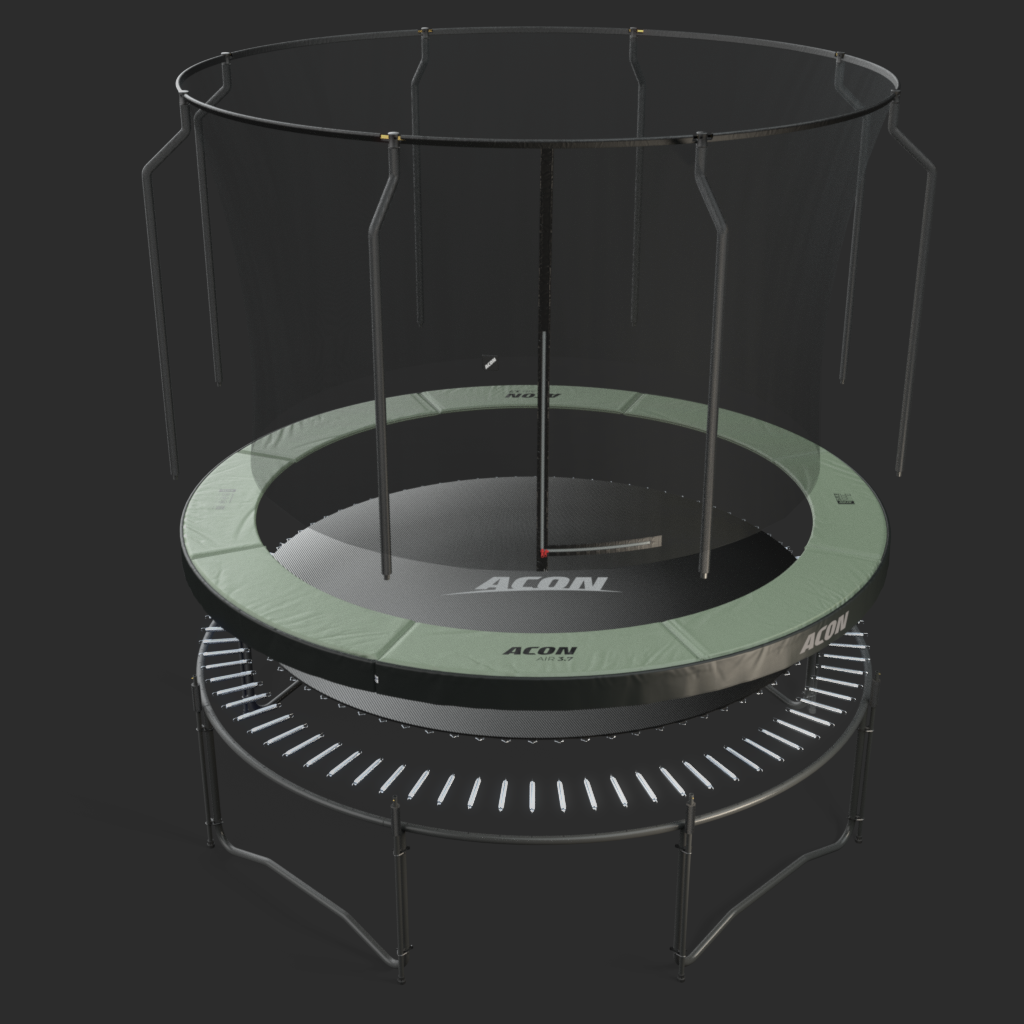
Types of Trampolines
Trampolines come in a variety of shapes and sizes. You may think of garden trampoline types as corresponding to a particular shape, for example: round, rectangular – however this is not the only way trampolines are defined, as we’ll see.
Round Trampolines
The classic trampoline type, round trampolines are the first choice for many when purchasing a home garden trampoline. They are considered recreational trampolines, and can be chosen with or without a net. Typically, round trampolines range in diameter from eight to sixteen feet. The best and highest bounce is right in the center of this trampoline type.
Rectangular Trampolines
A big, rectangular trampoline is popular among families and semi-professional gymnasts, as well as those who want to use their trampoline for tricking and gymnastics practice. This makes sense: trampoline gymnastics is an Olympic sport, played on big, rectangular trampolines.
A rectangular trampoline gives practice an authentic, Olympic-level gymnast feel. It doesn’t matter where you jump on a rectangular trampoline – you experience an equal bounce on all parts, thanks to the robust fabric used, that can bear heavier weight. This makes for much higher jumping. They’re more commonly seen in medium and large sizes given the nature of the practice taking place on them.
Acon is known for our rectangular trampolines, due to their innovation, performance and better bounce. Our Piano Wire Springs bring maximum energy into every single leap.
Trampolines in Other Shapes and Styles
Square, oval and hexagonal shape trampolines are less common but there are trampolines this shape on the market. Overall, round or rectangular trampolines tend to be the most common. While many trampolines are made for jumping above ground, there are also types of trampolines made specifically for in-ground garden placement. Trampoline sizes regardless of shape will vary, with larger outdoor trampolines primarily used for gymnastics practice.
NOTE! ACON trampolines are not recommended for in-ground use. ACON's warranty does not cover such use.
Featured Trampolines
Show AllWhat is a Mini Trampoline?
A mini trampoline is smaller than standard trampolines, and closer to the ground. Depending on the manufacturer, the mini version of a trampoline may be made with springs or bungee cords. It has much in common with the regular trampoline, but it’s more compact.
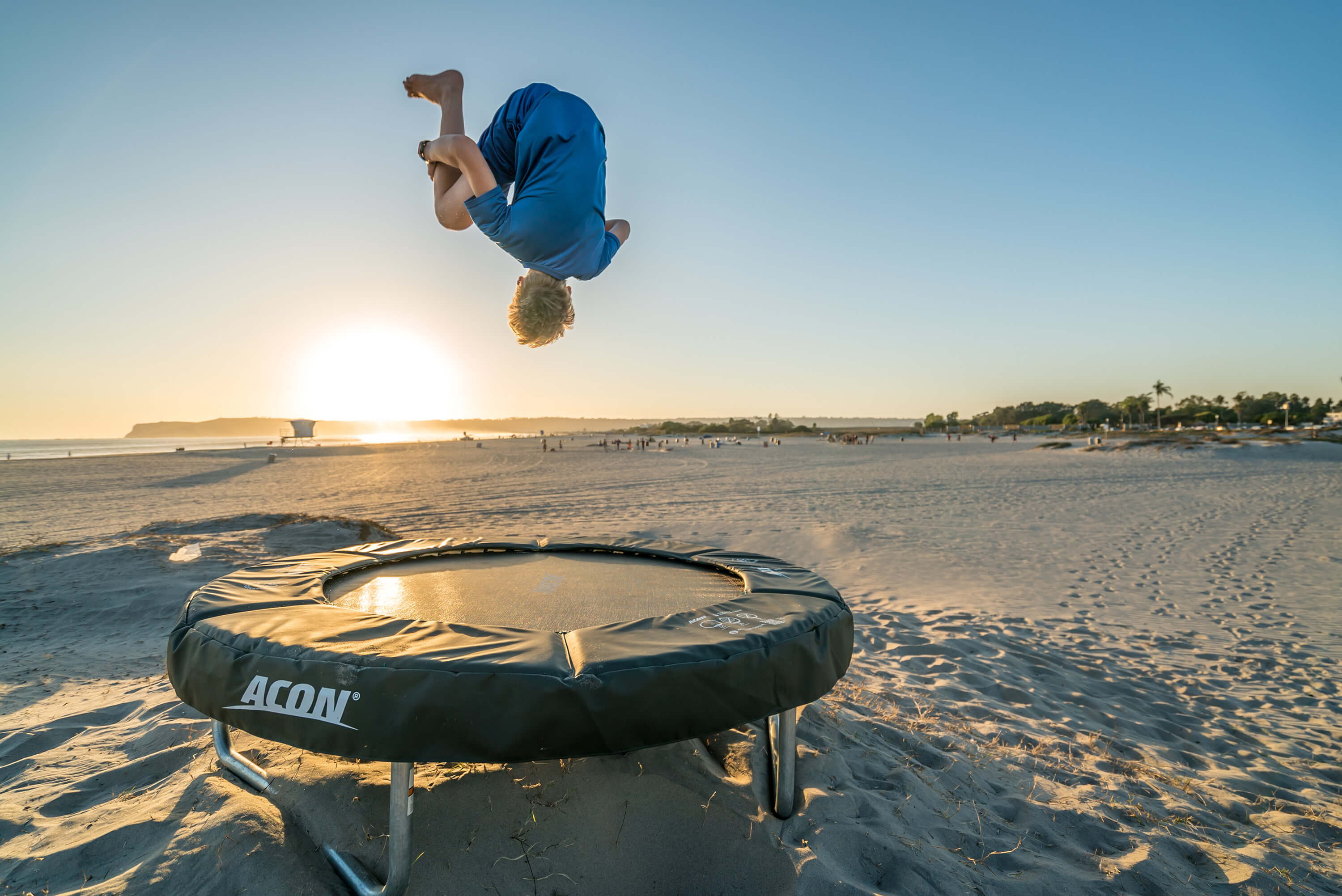
Types of Mini Trampolines
Mini trampolines are small but mighty! They’re not just for regular jumping – although they’re great for that too. Their portable and travel friendly size make them one of the most versatile trampoline options.
Mini Trampolines for Standard Jumping
Mini trampolines for standard jumping are the closest thing to a standard trampoline type. Their main difference being their compact size and easy portability. As they are so small, they usually do not have safety nets. As a precaution, they may come with certain weight limits, proportionate to their size and being closer to the ground.
One such example is the Acon Air 6ft round trampoline, aka Baby Acon. It’s slightly bigger than most mini trampolines, so you can use it for tricking or exercise. Coming with the same legendary bounce as our bigger trampolines, it’s a great alternative for those that have limited space available.
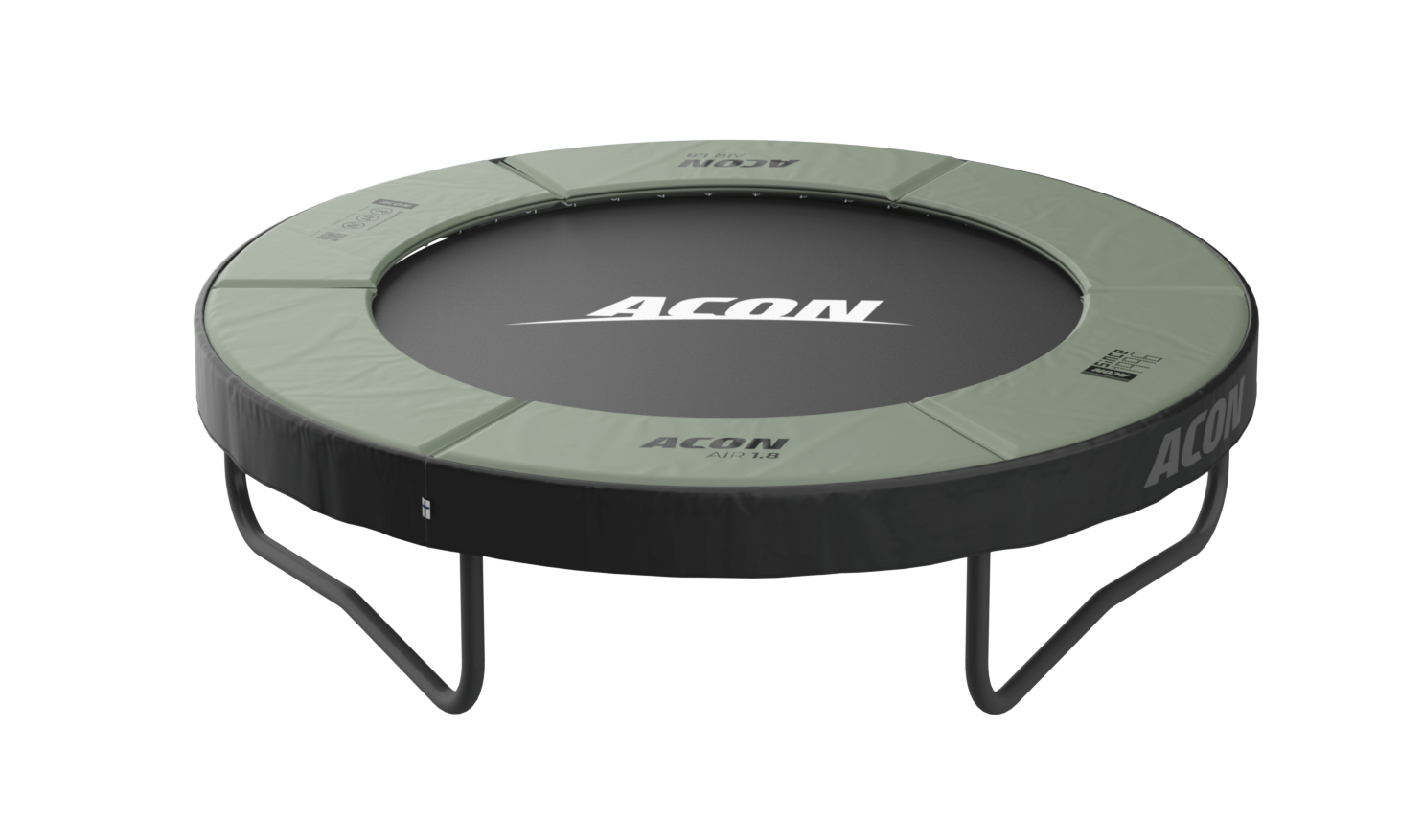
Mini Trampolines for Tricking
Used in competitive sport and Team Gymnastics by gymnasts, a gymnastics mini trampoline is used specifically to practice tricks and moves. Gymnasts can practice acrobatic moves on these trampolines.
Mini Trampolines for Exercise
While a basic mini trampoline is the closest to a regular trampoline of a larger size, mini trampolines for exercise are closer to rebounders, which we’ll speak about next. These trampolines may or may not have a handlebar, that you can use to anchor your workouts on this trampoline.
One of the main differences between these trampolines is the use of mini-sized springs instead of bungee cords. Often these trampolines are a more affordable option than standard rebounders.
What is a Rebounder?
Rebounders are smaller fitness trampolines that are designed as a tool to enhance your indoor exercise and workouts. A rebounder has a different kind of bounce than a regular trampoline: it offers more resistance compared to the bounce you can experience on a garden trampoline. In other words, a rebounder is carefully engineered to give you a workout while you bounce, so you are using your muscles when you make moves.
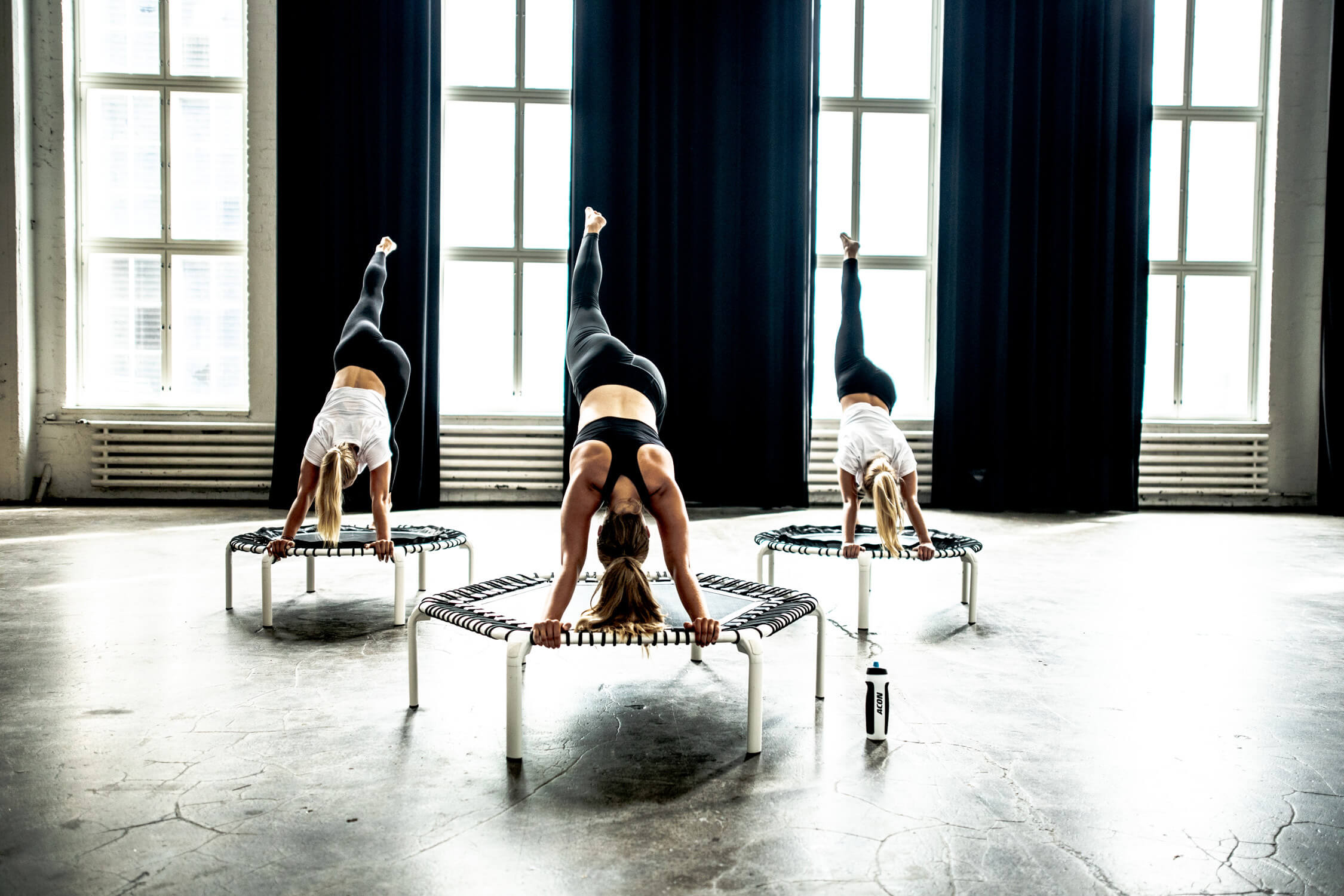
Types of Rebounders
Rebounders are light and easy to store at home, making them ideal for single-person, aerobic exercise routines that don’t put pressure on the body - as they are relatively low impact. Rebounders come in a basic format, or with a handlebar. Let’s look at the differences between these types.
Basic Rebounders
A basic rebounder is the regular kind, which tend to be a bit smaller than mini trampolines. Designed for fitness, they’re a great choice for stretching and low impact, body weight exercises. The gravitational pull on a rebounder increases the body weight impact, for a more effective workout. They contain bungee cords instead of springs, that are sturdy and flexible to protect and support ligaments and joints. The bounce is deeper and gentler on a basic rebounder.
Acon’s Fit 1.12m Round Rebounder is a classic round shape and offers one of the largest jumping areas available on the market – perfect for taking your stamina and fitness to the next level.
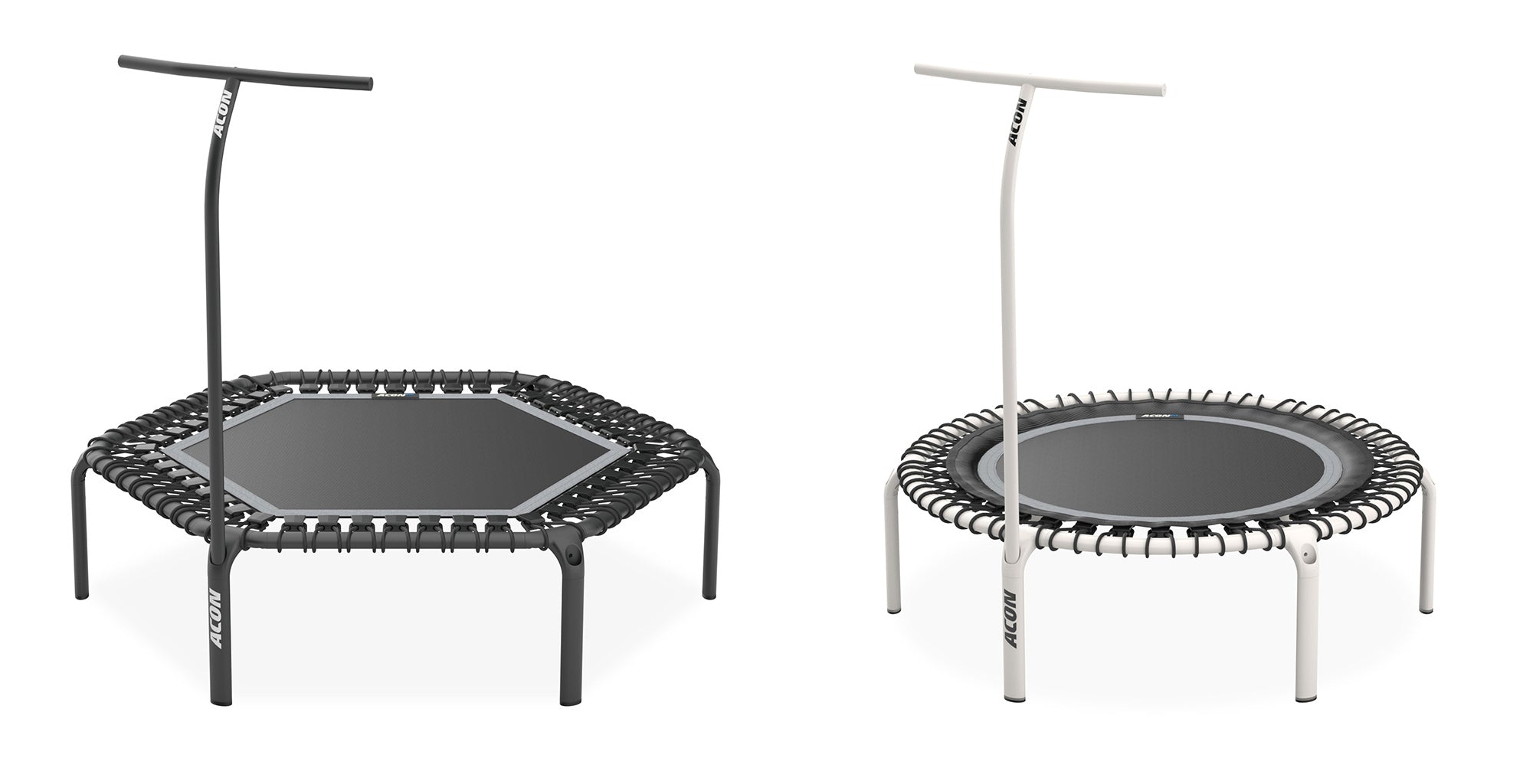
Rebounders with a Handlebar
These are similar to a basic rebounder, but they come with a handlebar. The handlebar offers greater flexibility and stability to the person exercising, allowing for more complex, intense moves. Whether you bounce or stretch on the rebounder, a handlebar provides extra support to help you balance and really take advantage of the health benefits a well-rounded workout provides.
Acon Rebounders
Show AllTrampoline vs Rebounder vs Mini - Common misconceptions
While there are many misconceptions, here are the two most common ones.
1. Mini Trampolines = Rebounders – Incorrect
The terms mini trampoline and rebounder are used interchangeably in some articles you read online, however this is incorrect. Both differ in their design and function. For example, mini trampolines are usually engineered with springs instead of bungee cords. In this way, their bounce potential can match a regular trampoline: they can be smaller versions of garden or regular trampolines.
Mini trampolines could be used for recreational purposes, like standard jumping all the way up to tricking.In contrast, rebounders are almost solely for fitness purposes. They are made from bungee cords and their bounce is less high than a regular or mini trampoline.
2. A rebounder is safer than a trampoline – Incorrect.
Trampoline safety is at the forefront of any trampoline design, regardless of whether it is a regular trampoline or a rebounder. It consists of three parts that you can read about in more detail in our safety blog article. When designing a trampoline, a reputable manufacturer implements these protocols to ensure the safety of those who use the trampoline end product.
Pros and Cons of Each Trampoline Type
All trampolines have something in common: the potential for hours of fun. How each one differs is important depending on your intended use for it. Suitability for tricks, trampoline portability, whether suited to indoor or outdoor use, and price point are all considerations when deciding between a trampoline, mini trampoline or rebounder. Let’s take a closer look at the pros and cons of each.
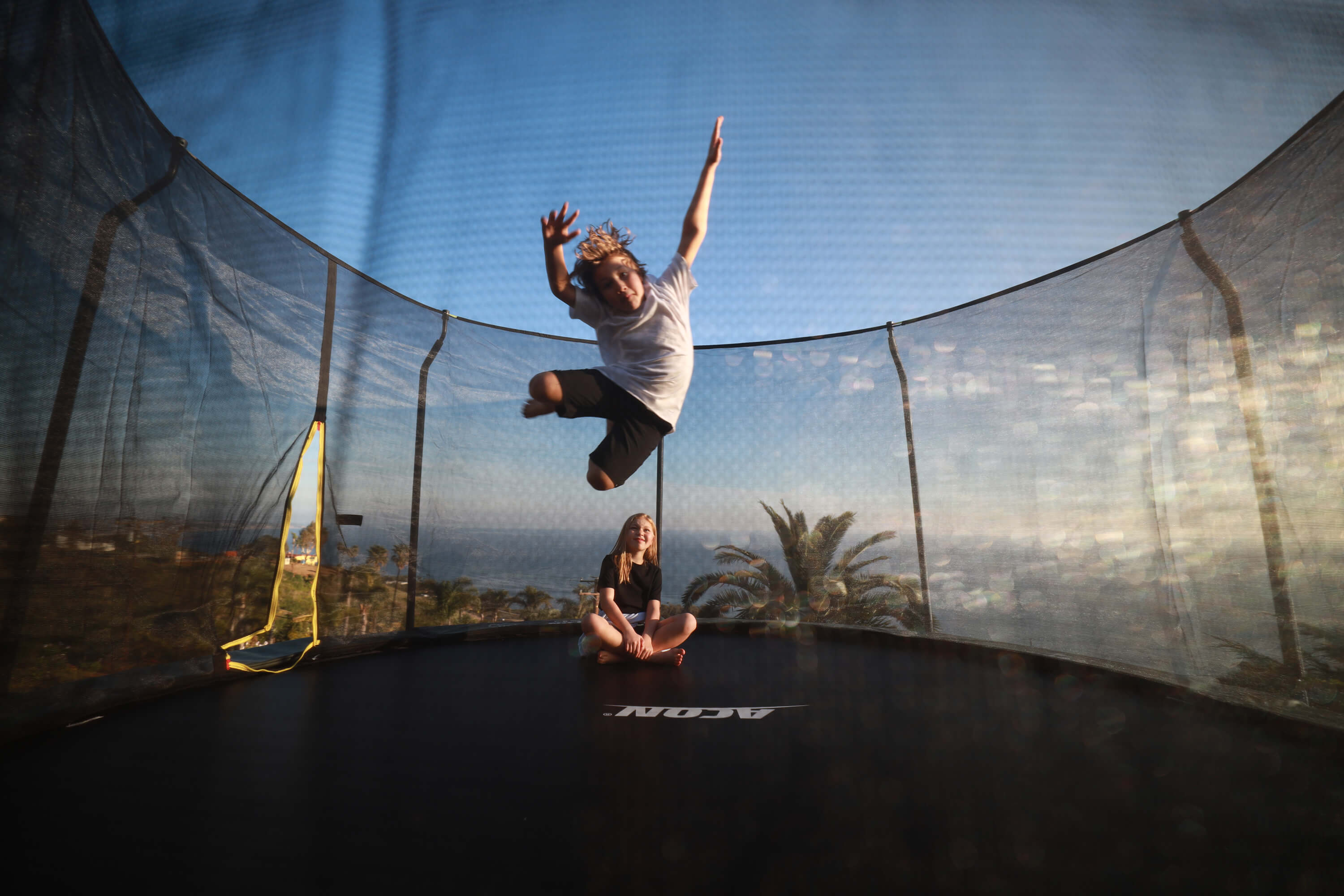
Pros and Cons of Trampolines
Outdoor trampolines are fun for all the family, and every ability will benefit from the thrill of the bounce. They support all kinds of tricks and jumping, come in different shapes and sizes and represent a long-term investment in your family’s leisure and recreation.
| Pros | Cons |
|---|---|
| Comes in many sizes | Mainly for outdoor use only (unless you have enough indoor space width and height-wise) |
| Best models designed for decades | Can be expensive / an investment |
| Recreational fun for the whole family | |
| Best models designed for decades to come | |
| Suitable for various kinds of jumping (casual, gymnastics, tricking) | |
| Suitable for various purposes (trampoline accessories, such as tents and basketball hoops) | |
| No weight limit or very high weight limit |
Pros and Cons of Mini Trampolines
The compact mini trampoline packs a powerful punch in terms of convenience, suitability to both indoor and outdoor play and affordability, but it comes with its own limitations.
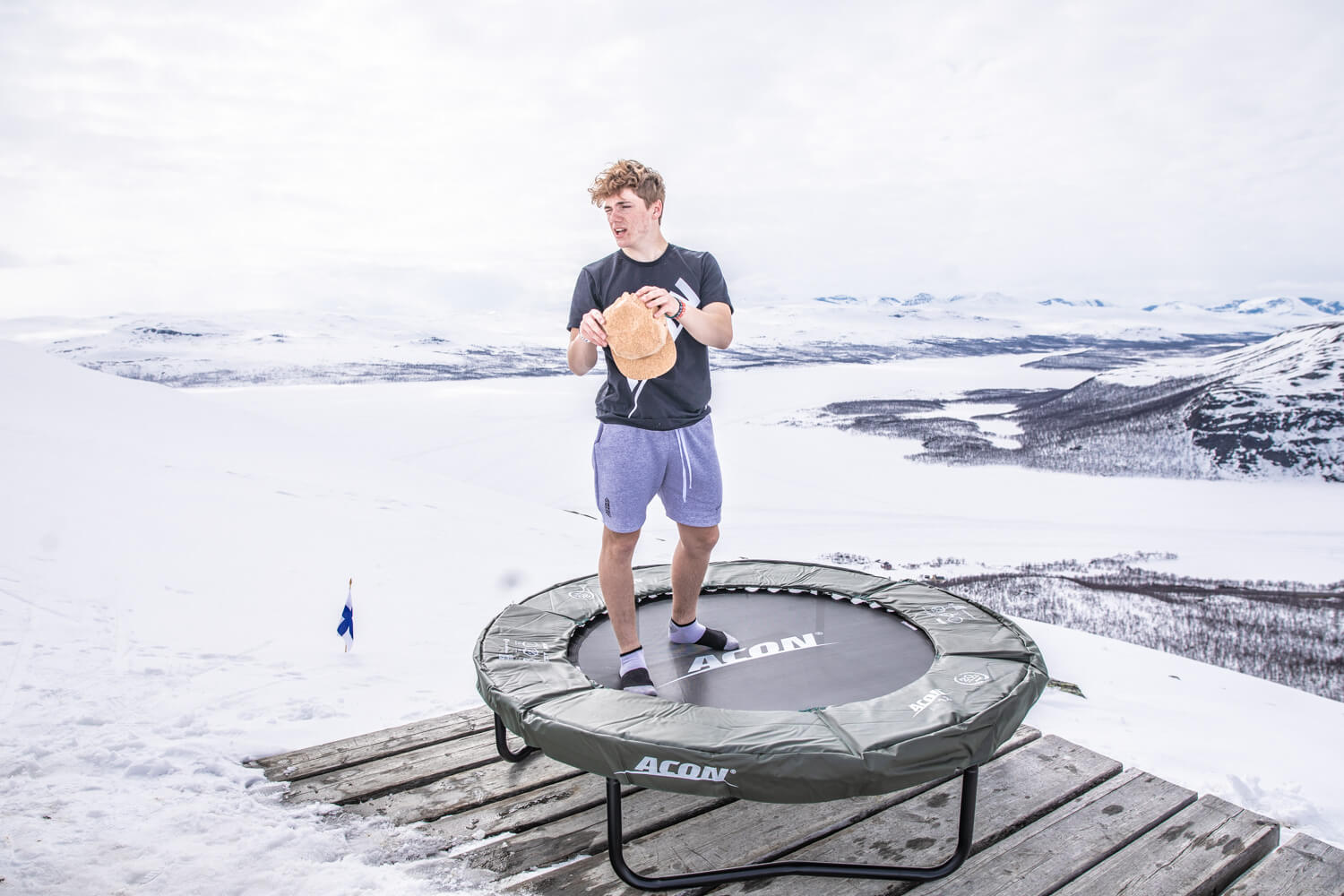
| Pros | Cons |
|---|---|
| Portable | Doesn’t usually come with a safety net |
| More accessible price point | Small bounce area puts some limitations |
| Oftentimes suitable for both outdoors and indoors | Weight limits |
| Great entry level piece |
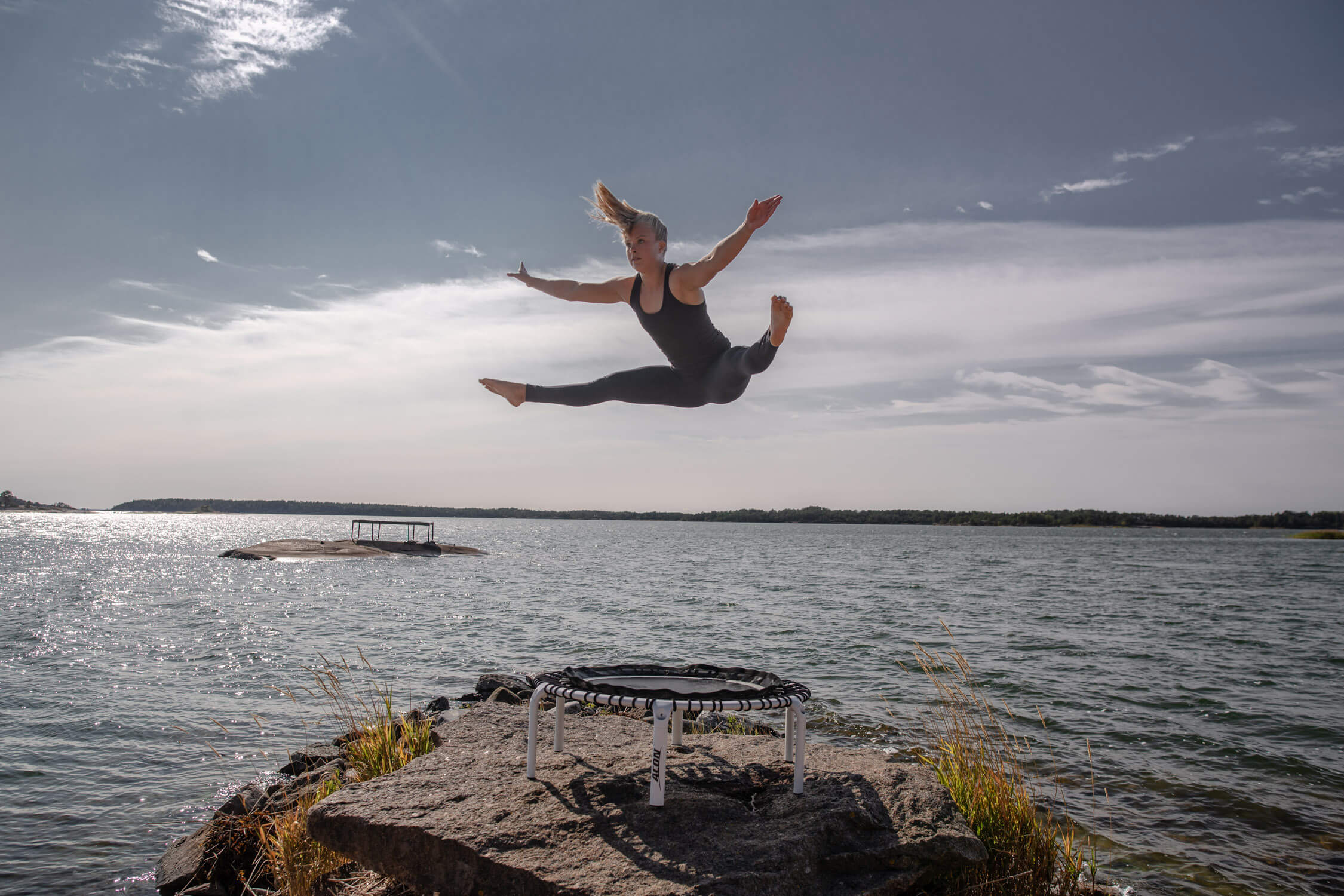
Get $50 off on your first order
Be the first to know about new products, exclusive offers and more! Enter your email and enjoy $50 off on your first order.
*Discount applies to cart values of $500 or more (excluding shipping). Cannot be combined with other discount codes. Cannot be combined with other discount codes. I acknowledge I have read and understood Acon Privacy Policy and I consent to the processing my personal data for marketing and profiling purposes.
Pros and Cons of Rebounders
For the exercise enthusiast, a rebounder is built to address your fitness requirements. This means there’s a bit less bounce to contend with.
| Pros | Cons |
|---|---|
| Portable | Indoor only |
| The bounce is designed for fitness purposes | Doesn’t bounce as high as regular trampolines |
| Low impact exercises suit most people – gentle for joints | |
| Easy and fun way to exercise |
Trampolines, Mini Trampolines and Rebounders: Comparison Table
Having looked at the differences between the trampoline types, the table below offers a clear breakdown of the main differences in form and function between trampolines, mini trampolines and rebounders.
Weight limits vary from manufacturer to manufacturer. Always check the information on the official website.*
| Information | Trampoline | Mini Trampoline | Rebounder |
|---|---|---|---|
| Location | Outdoor | Indoor and Outdoor | Indoor |
| Portability | Not portable | Most often portable | Portable |
| Purpose (main) | Recreational | Recreational | Fitness |
| Shape | Various | Various | Various |
| Size Options | Many | Some | Few |
| Spring options | Springs | Springs | Bungee cords |
| Use | Jumping, Tricking, Gymnastics, other non-jumping activities | Jumping and Tricking | Exercise yoga & meditation |
| *Weight limit (for jumping activities) | No single jumper weight capacity limit or high weight limit | (Usually) weight limits | (Usually) weight limits |
Which Trampoline Type is the Best for Me?
Finding out the best type of trampoline for you depends on a number of factors. Before choosing, you need to ask yourself a few practical questions.
When you’re considering buying a trampoline, one of the first questions to ask yourself is why you want one. Is it for fun, or to encourage a budding gymnast under your roof? Or perhaps it’s simply to help you to partake in more physical activity, or enhance your workouts? How much space do you have indoors? How big is your backyard, would you be happy to rearrange it to make space for a trampoline (and the surrounding safety space required)?
All of these factors need to be taken into consideration prior to purchasing. Acon can help you with this – we’ve already put together an article about how to find the right trampoline for you here, and if you’re still unsure, try our quiz.
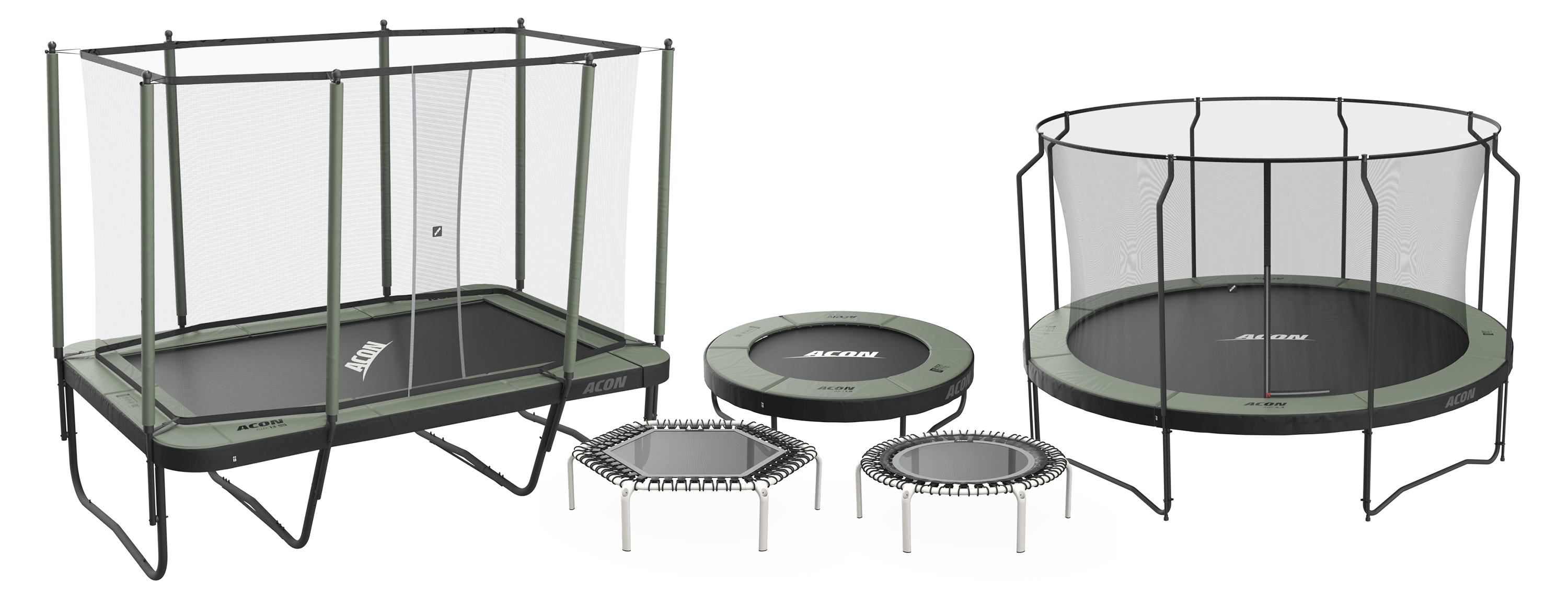
Trampoline vs Rebounder: Frequently asked questions
Can you use a trampoline as a rebounder?
No, a trampoline and a rebounder have different functions. A rebounder is used for fitness exercises, so it is designed to have a different bounce function and to target muscle groups in the body a different way.
Is it worth buying a trampoline / mini trampoline / rebounder?
Yes! Just make sure to do research and explore the options to understand whether your needs and wants lean more towards having outdoor fun or for finding a new way to exercise.
Is 20 minutes of rebounding enough?
20 minutes of rebounding is a lot of aerobic, cardio exercise that will get your heart rate up, contributing to better fitness with consistent practice.
Is rebounding as good as walking?
It depends what you consider “good” – in terms of calories burned, yes, rebounding is a more effective calorie-burning exercise than walking. For example, 30 mins of rebounding burns significantly more calories than its equivalent time walking or even running.
Does rebounding tone abs?
Jumping relies on core strength, so every time you bounce you’re helping to build and flex the muscles in your abdomen. It’s an ab-toner with low impact compared to other exercises that target this area, for example crunches. That means less muscle strain, and a whole lot more fun!


